Along the old highways of Japan, you will find Jizo statues, often wearing a red cap and bib
Jizo (also written Jizō) is a bodhisattva, that is, one who achieves enlightenment but postpones Buddhahood in order to help others.
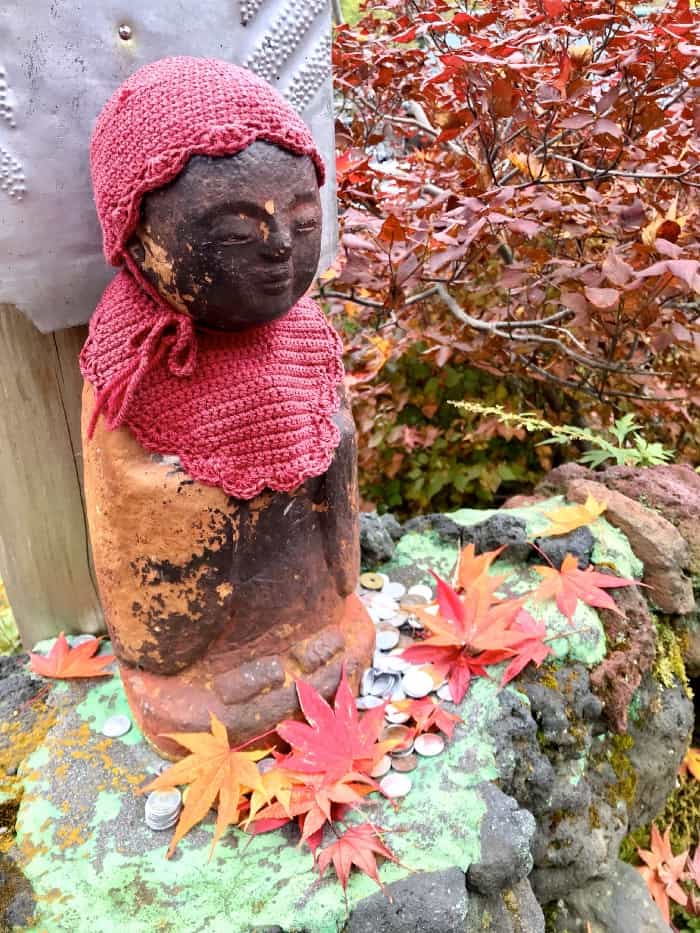
Jizo was originally the keeper of souls before they were born. From the late 1800s, Jizo came to be known as the guardian of travelers and children, both in this world and the next.
Jizo watches over all children who have died, including miscarried and aborted babies. These children did not have time in their brief lives to build up good karma, as well, they suffer judgment for the heartbreak that their deaths brought to their mothers. Each day the children build towers of pebbles along Sai no Kawara, the riverbank of souls in limbo, in hopes of crossing over and into heaven. But each evening, demons knock down their towers and beat the children.
Don’t worry, though, Jizo rescues the children, hiding them in his big sleeves.
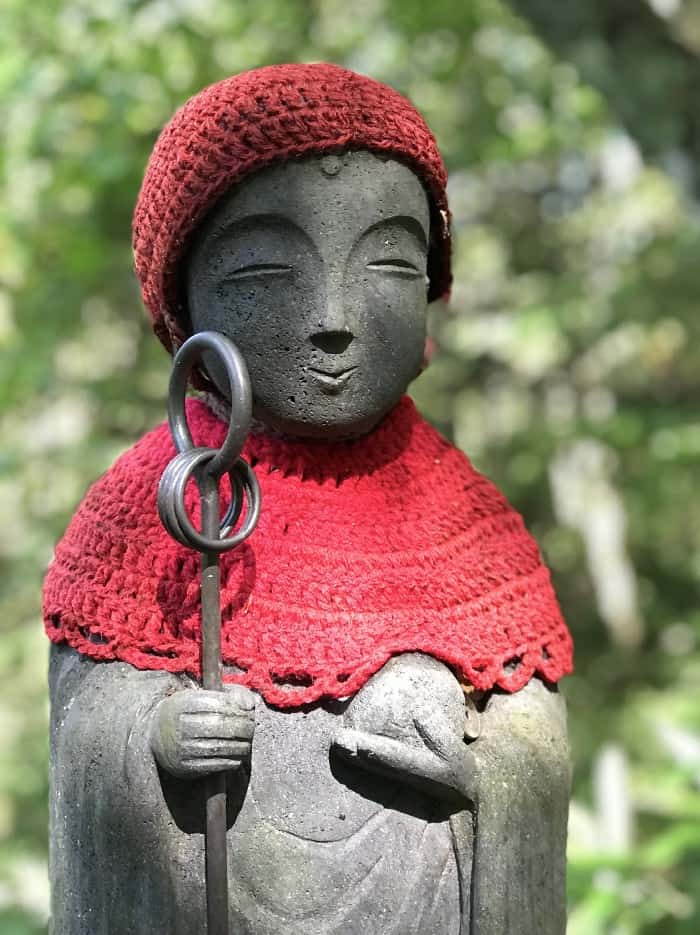
Thinking of their children undergoing this suffering, mothers pray to Jizo to take care of them. Red is the color for expelling demons and illnesses, so mothers clothe Jizo statues in red bibs and hats, both as a show of gratitude and also in prayer that Jizo will care for and protect their children.
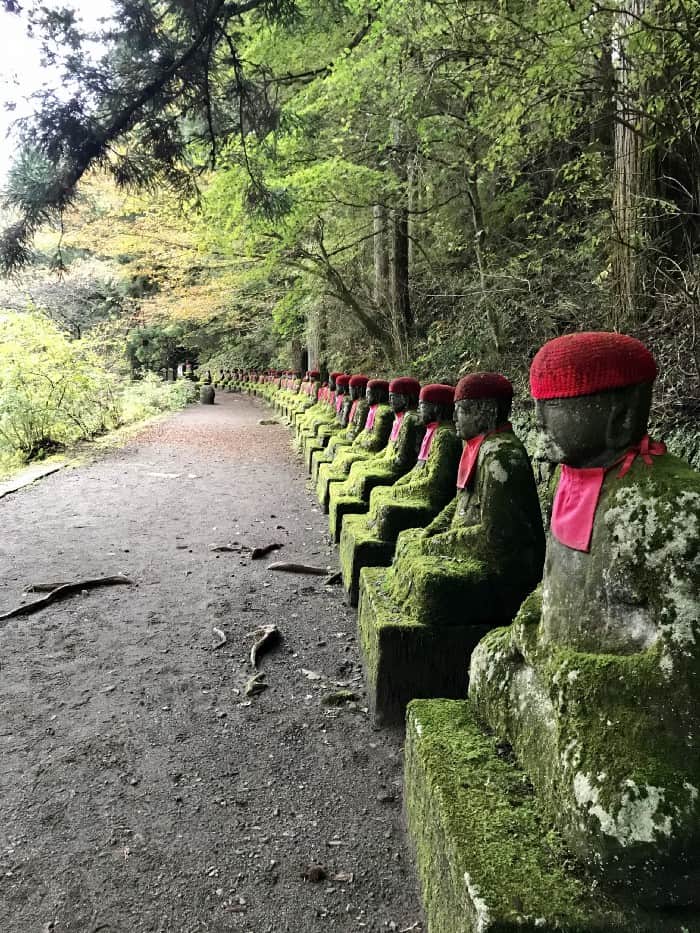
You may see piles of stones around Jizo statues, placed there to help the little ones perform their penance, or sometimes toys, left there by mothers thankful to Jizo for healing a sick child.
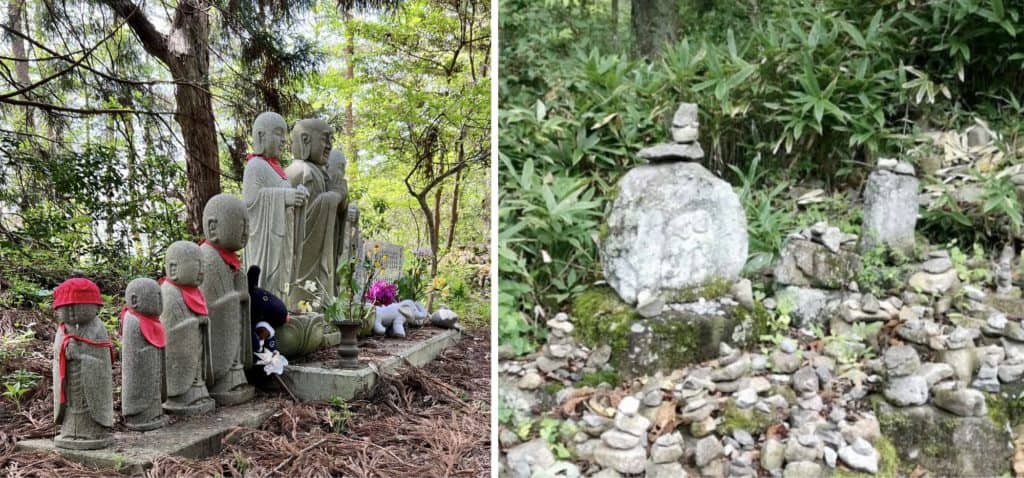
Jizo also protects the spirits of muenbotoke, those who have died an unnatural death, at sea, along the road, or those who have no family to look after their graves. These “unconnected dead” find comfort in the care of compassionate Jizo.
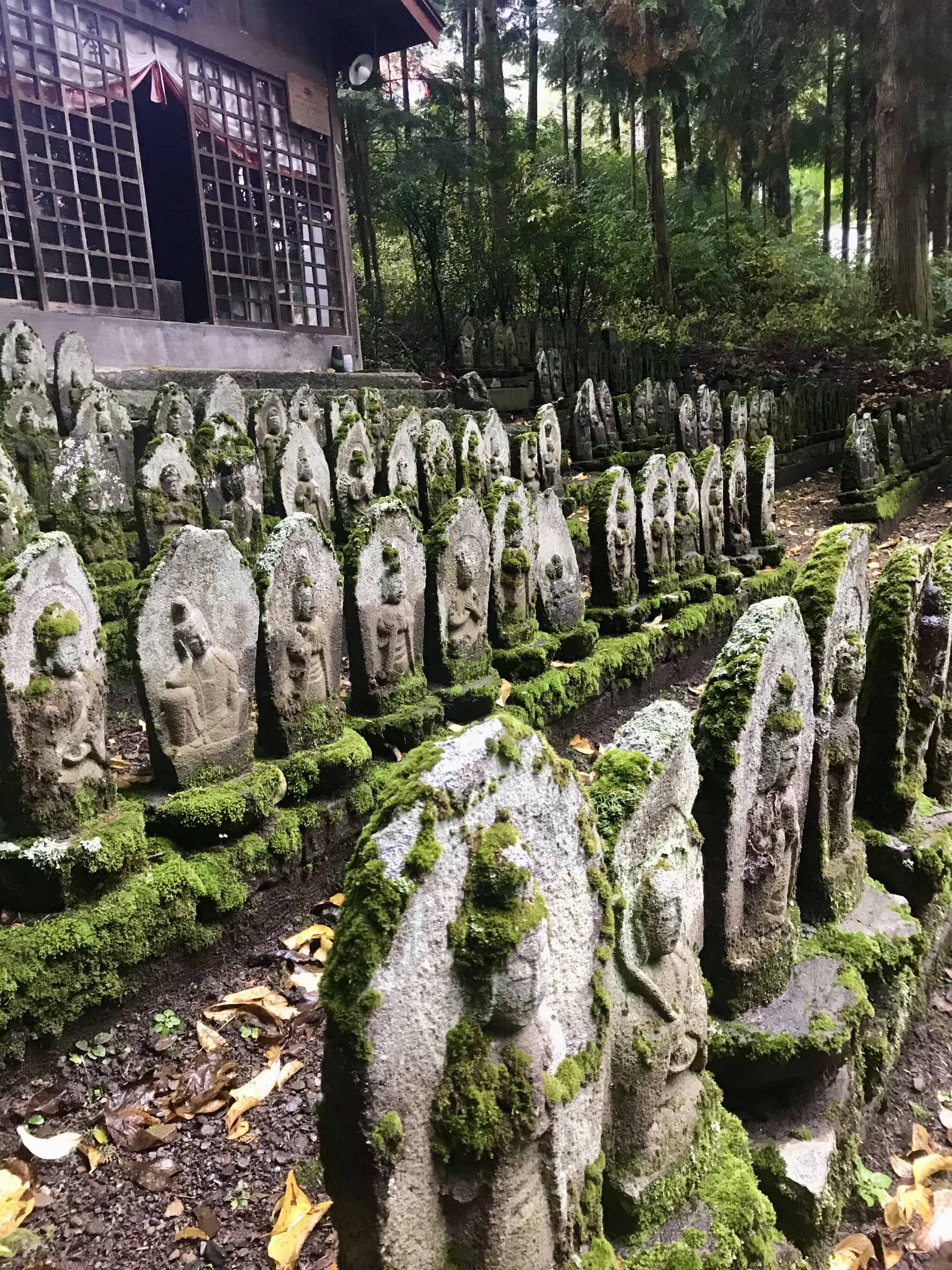
Photos ©Diane Neill Tincher
If you have questions about Japan or suggestions for articles, please add them in the comments. For more photos and information on Japan, follow me on instagram at: https://www.instagram.com/more_than_tokyo/




